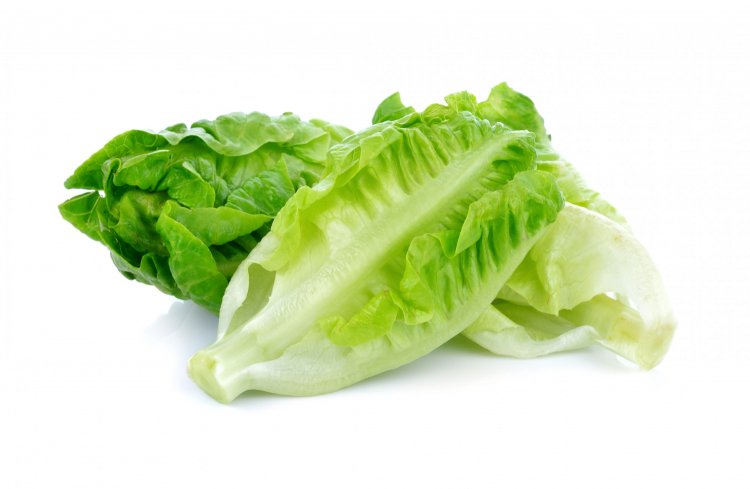Lettuce: A Versatile and Nutritious Green Leafy Vegetable
Lettuce, scientifically known as Lactuca sativa, is a widely cultivated leafy vegetable cherished for its crisp texture, mild flavor, and versatility in culinary applications. Belonging to the Asteraceae family, lettuce is a cool-season crop that thrives in temperate climates around the world. Let's explore the various types, nutritional benefits, culinary uses, and cultivation practices associated with this popular green vegetable.

Types of Lettuce
Lettuce comes in several distinct types, each offering unique flavors and textures:
Iceberg Lettuce
Recognizable by its tightly packed, round head of crisp, pale green leaves, iceberg lettuce is known for its refreshing crunch and mild taste. It's commonly used in salads and sandwiches.
Romaine Lettuce
Also known as cos lettuce, romaine lettuce features elongated, sturdy leaves with a slightly bitter taste. It's often used in Caesar salads and adds a robust texture to dishes.
Leaf Lettuce
This category includes varieties such as green leaf, red leaf, and oak leaf lettuce. These lettuces have loose, tender leaves that vary in color and are prized for their delicate, mild flavors. They are excellent choices for mixed salads.
Butterhead Lettuce
Varieties like Bibb and Boston lettuce fall into this group. Butterhead lettuce forms loose heads of tender, buttery-textured leaves with a sweet and mild flavor profile.
Arugula
Although technically not a lettuce but often categorized with leafy greens, arugula (or rocket) has peppery, spicy leaves that add a zesty kick to salads and other dishes.
Nutritional Benefits
Despite its low-calorie nature, lettuce packs a nutritional punch:
Vitamins and Minerals
Lettuce is particularly rich in vitamins A and K. Vitamin A is essential for vision health and immune function, while vitamin K plays a crucial role in blood clotting and bone health. It also contains small amounts of vitamin C, folate, and potassium.
Water and Fiber
With its high water content (about 95%), lettuce helps to hydrate the body. It also provides dietary fiber, aiding in digestion and promoting satiety.
Culinary Uses
Lettuce is most commonly enjoyed fresh in salads, but its uses extend beyond raw consumption:
Salads
It serves as a foundational ingredient in salads, offering texture and freshness. It can be paired with a variety of toppings, dressings, and other vegetables to create diverse salads.
Sandwiches and Wraps
Lettuce leaves are used to add crunch and a nutritional boost to sandwiches and wraps. They can be used as a wrap for fillings or as a bed underneath other ingredients.
Cooked Dishes
While traditionally eaten raw, certain types of lettuce, such as romaine, can be briefly grilled or sautéed to enhance their flavor and texture in cooked dishes.
Growing and Harvesting
Lettuce is relatively easy to grow and is well-suited for home gardens and container gardening:
Cultivation
It thrives in cool, moist conditions and can be grown from seeds or seedlings. Different varieties have varying maturity times, with some ready for harvest in as little as 30 days for baby greens and up to 70 days for full heads.
Harvesting
Lettuce leaves can be harvested continuously by picking outer leaves as needed or by cutting the entire head at once. Harvesting in the morning when leaves are crisp and cool helps preserve flavor and texture.
In conclusion, lettuce stands out as a versatile, nutritious, and delicious leafy green vegetable. Its wide array of types allows for diverse culinary applications, from simple salads to complex dishes. Packed with vitamins, minerals, and fiber while being low in calories, lettuce contributes to a healthy diet and promotes overall well-being.
Disclaimer: The information provided in this article is for educational purposes only and should not be considered medical advice. If you have any health concerns or are experiencing symptoms, it is important to consult with a healthcare professional, such as a doctor or clinic, for proper diagnosis and treatment. Always seek the advice of your doctor or other qualified health provider with any questions you may have regarding a medical condition. Do not disregard professional medical advice or delay in seeking it because of something you have read in this article.
#Lettuce #Nutrition #HealthyEating #SaladRecipes #LeafyGreens #HomeGardening #CulinaryUses #VitaminA #VitaminK #Hydration #FiberRich
What's Your Reaction?





















